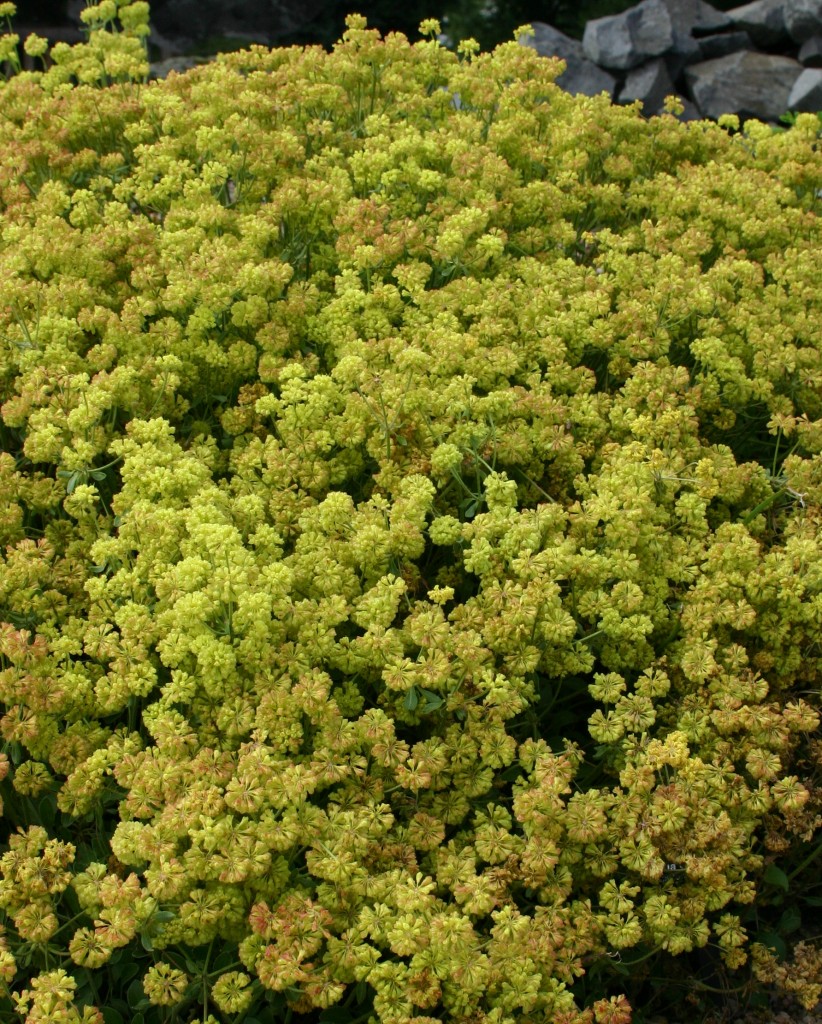From Grand Mesa, It’s Kannah Creek® Buckwheat!

A drive on nearly any mountain highway offers a spring and summer display of brightly colored ‘sulphur flowers’ along the roadside. One of the prettiest selections of this genus of buckwheat plants is KANNAH CREEK® buckwheat, introduced this season by Plant Select®. This durable western native was found in the Kannah Creek region of western Colorado in the shadow of Grand Mesa. Kannah Creek rises on Grand Mesa and is a tributary of the Gunnison River. KANNAH CREEK® buckwheat is best known for its masses of bright yellow flowers that gradually deepen to orange as they mature on their thin but sturdy stems. The flowers rise above an attractive low mat of green leaves that spreads moderately as a groundcover. A defining feature of this plant that as the weeks of autumn pass, the foliage transforms from deep green to a vivid purple-red through the winter extending the color interest throughout the year. If the flowers are harvested before reaching full maturity they will dry nicely for everlasting bouquets, a beautiful reminder of their earlier presence in the garden.
KANNAH CREEK® earns high marks for being adaptable to a wide range of growing conditions. The most favorable settings for optimum growth are sunny sites with well-drained soil however a location in partial sun will also suffice. Once established this showy perennial needs only occasional watering to grow and flower successfully. In a perennial border or a rock garden, you can’t go wrong with this grand plant.
View the plant profile here or see the video here.
KANNAH CREEK® Buckwheat (Eriogonum umbellatum var. aureum ‘Psdowns’)
Perennial
Height: 12-15 inches
Width: 12-24 inches
Blooms: May to July
Sun: Full sun to partial shade
Soil Moisture: Moderate to xeric
Hardiness: USDA zones 3-8 (up to 10,000 feet)
Culture: Garden loam, clay or sandy soil


I love this plant and the deer around here love it also. It is the first thing they bite on in my garden. Both of mine have been eaten to the ground but always come back. I have a couple of potions I spray to repel deer and that is working for now.
It seems to be a signature plant in Colorado. Hope it will do well in my Central New York rock garden!
Mine is flopping – maybe too much water? – but I love the green-yellow pompoms! Will be dividing it to try in dryer parts of the garden.
Yes, probably too much water. This plant can survive off natural precipitation of 15″ annually.
This is a great border plant for lazy gardeners. Mine started from relatively small nursery pots and are now over 2 feet across with no supplemental water after the 2nd-3rd year. They suppress any weeds (except bindweed). I am going to divide the two I have and will be looking for more at the nurseries to help fill out my driveway margin bed.
Mine were doing really well, but now seem to have some kind of disease. It starts on one side — the leaves turn red/brown and get crispy, and spreads across the plant gradually until its all dead. Thoughts on what could be happening? Googling diseases that affect this plant hasn’t turned anything up — everyone suggests they are worry free, but mine are not! They grew well and bloomed gloriously, so I thought they were happy until now . ..
Hi,
I had the same issue. I planted two and one is thriving going into its 3rd season but last year the 2nd one died with the same condition you have described. As they were right next to each other, I don’t believe it was a water or soil issue.
Casey & Diana, That is very unusual for buckwheats to have any disease issues. That’s according to USU & Missouri Botanic Gardens, who focuses on these types of ornamental plants. Depending on where you are in the country, they may have poor drainage, be getting too much water and/or have too much shade.
[…] ended up selecting Kannah Creek Sulphur Buckwheat (Eriogonum umbellatum) and Wild blue flax (Linium lewisii). The area is 54 square feet, and I drew […]